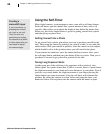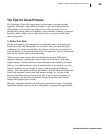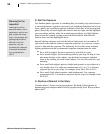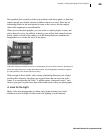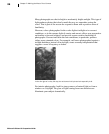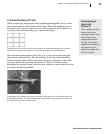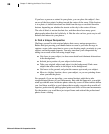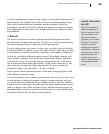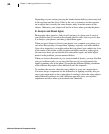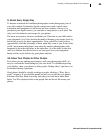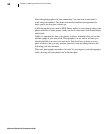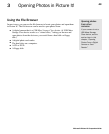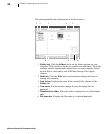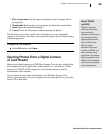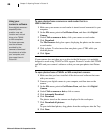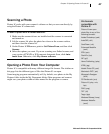
Microsoft Picture It! Companion Guide
Chapter 2: Making the Most of Your Camera
40
Depending on your camera, pressing the shutter button halfway down may lock
in the exposure and the focus. If this is the case, you need to set the exposure
on an object that is exactly the same distance away from the camera as the
subject. Otherwise, your subject will not be in focus when you take the photo.
8. Analyze and Shoot Again
Photography takes practice. And you will progress at a faster rate if some of
your practice time is focused on developing specific skills. One way to do that
is to analyze your photos, and then go shoot them again.
When you get a chance to look at your photos on a computer or as prints, you
can assess their quality of composition, lighting, exposure, and white balance.
Upon close inspection, you might realize that you placed your subject too close
to the center of the frame, or that incandescent lights caused an orange glow.
On your next shoot, go out and take this same photo again, and make adjust-
ments for the problems you encountered before.
When you look at the results of your second round of photos, you may find that
you got excellent results, or you may find that one of your adjustments dis-
rupted something else in the photo. Or maybe the different lighting conditions
of the different day made it more difficult to nail the exposure.
To continue the exercise, shoot the same subject or scene on a regular basis.
You must always compensate for the differences in lighting each day, but you
can try new approaches to the composition. Learning to shoot the same subject
under different conditions or with a different approach gives you valuable
experience and ideas when you encounter new situations.



